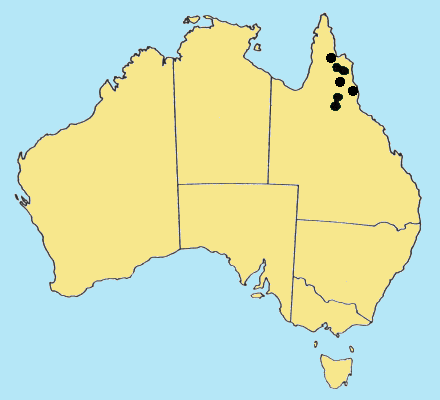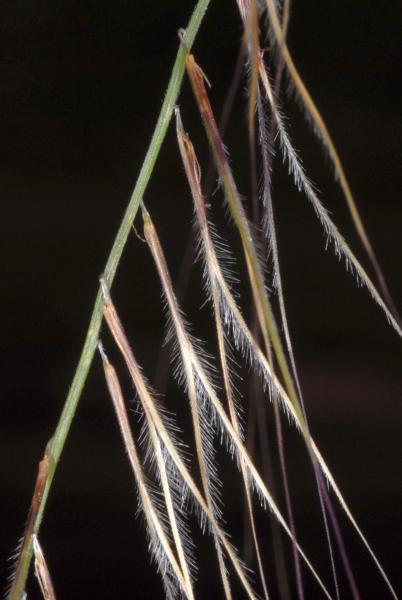Perotis clarksonii J.F. Veldkamp.
Austrobaileya 3: 609 (1922).
Classification. (GPWG 2001) : Subfamily
Chloridoideae. Cynodonteae.
Type of Basionym or
Protologue Information: HT: J.R. Clarkson 6802, 7 Mar 1987,
Australia: Queensland, Cook, 90 m (L).
Key references
(books and floras): [2002] D.Sharp & B.K.Simon, AusGrass, Grasses of
Australia.
Habit. Annual.
Culms 15–40 cm tall. Mid-culm nodes glabrous. Ligule a fringe of hairs.
Leaf-blades spreading, lanceolate, flat or involute, 1.7–3.5 cm long, 1.7–3.5
mm wide. Leaf-blade surface glabrous or indumented.
Inflorescence.
Inflorescence solid, a raceme. Racemes 1, 12–29 cm long.
Spikelets.
Spikelets sessile. Fertile spikelets 1-flowered, comprising 1 fertile
floret(s), without rachilla extension, linear or lanceolate, terete, 47.5–55 mm
long.
Glumes. Glumes
similar, firmer than fertile lemma. Lower glume linear, 1 -nerved. Lower glume
apex awned. Upper glume subulate, 6–11 mm long, 1 -nerved. Upper glume surface
smooth.
Florets.
Fertile lemma 8–9 mm long, without keel, 1 -nerved. Anthers 3.
Continental
Distribution: Europe, Africa, Temperate Asia, Australasia, and South
America.
Australian
Distribution: Queensland.
Queensland:
Cook.
Notes.
Endemic; in lower altitude areas of the Great Dividing Ra., in the SE quarter of
Cape York Penin., Qld. On sandy soils in granitic areas with savannah woodland
and a grassy understorey.





